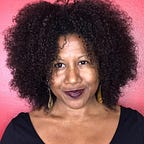COVID-19 vaccines & a chat with friends
Around the world there are many COVID-19 vaccines under investigation. To date, the US Food and Drug Administration has made the Pfizer-BioNTech and Moderna COVID-19 available under an emergency access mechanism called an Emergency Use Authorization (EUA). On December 14th, 2020, use of the Pfizer-BioNTech vaccine began in the US under the EUA. Healthcare workers are first in line to receive it. On December 27th, 2020 a group of friends joined me for a Facebook chat about the COVID-19 vaccine. Three are healthcare frontline workers who had already received the first dose of the Pfizer-BioNTech vaccine, and one was a biotechnology researcher who helped to explain drug development. They include:
- Dr. Malaika Witter Hewitt, ENT-otolaryngologist in Atlanta, Georgia
- Dr. Lisa Roberts, Pediatrician in Duluth, Georgia
- Dr. Abike James-Enakhimion, MPh, Obstetrician & Gynecologist, Philadelphia, PA
- Dr. Warren Marcus, Cellular and Biosurface Engineer/Scientist, Miramar, FL
The recording of the #COVID19allhandsondeck session is linked below along with the questions asked, and links used during the discussion.
1. Firstly, can you introduce yourself and your field of work, and then tell us what convinced you to take this vaccine?
2. What was it like to take the first shot of the COVID-19 vaccine?
3. There are many side effects that have been reported with the Pfizer-BioNTech COVID-19 vaccine (see this link for more information, including the ingredients https://www.fda.gov/media/144414/download):
· injection site pain
· tiredness
· headache
· muscle pain
· chills
· joint pain
· fever
· injection site swelling
· injection site redness
· nausea
· feeling unwell
· swollen lymph nodes (lymphadenopathy)
and there is a remote chance that the Pfizer-BioNTech COVID-19 Vaccine could cause a severe allergic reaction. Did you experience any of those?
4. I read that persons on blood thinners should consult with a medical professional prior to taking the vaccine. Having had a heart attack, I am on a daily dose of aspirin. Does that count as a blood thinner?
5. All of you shared images of yourself receiving the vaccine, social media hashtags like #gotthevaccine emerged. Why is that an important message at this time?
6. What has been the response from family and friends that you got the vaccine?
7. You will soon receive the second required dose of the Pfizer-BioNTech vaccine, administered 21 days after your first shot. Research to date shows that these combined shots are 94.5% effective at preventing COVID-19 infection. Can someone explain where that number comes from?
8. Now that you have the vaccine, what changes with how you work and how you interact outside of work? If anything at all.
9. For both the Moderna and Pfizer-BioNTech vaccines, 10% of the study populations were Black. Why does this kind of representation matters in these studies?
10. Also, Dr. Kizzmekia Corbett is a senior research fellow at the Vaccine Research Center (VRC) of the National Institute of Allergy and Infectious Diseases, National Institutes of Health (NIAID NIH). She is currently the scientific lead of the VRC’s Coronavirus Team. Seeing a Black woman play such an instrumental role in leading the nation’s efforts for some of the first COVID-19 vaccines — how does that make you personally feel?
11. In your community, who is being prioritized for the vaccine and what are some things that you have been doing to share knowledge on COVID-19 vaccinations?
12. All of you have Caribbean roots, some with family there. Does getting the vaccine give you a window of opportunity to visit them, and does it change protocols to visit them?
13. Many Caribbean nations are amongst the 189 nations that have signed up for COVAX, a joint fund for equitable distribution of COVID-19 vaccines led by Gavi, the World Health Organization, and the Coalition for Epidemic Preparedness Innovations (CEPI). It has secured an estimated 700 million vaccine doses so far and wants to provide 2 billion by the end of 2021, with the aim of providing coverage to at least 20% of the population of participating countries. What’s your hope for vaccines getting to the Caribbean? Below are storage and costs for some of the vaccines under study or in use already.
14. Let’s get down to how viruses and vaccines work. Warren, this image was published in Nature in April 2020. Walk us through it please.
15. There are many vaccines under development. Can you explain the different approaches shown below?
16. The Pfizer-BioNTech and Moderna COVID-19 vaccines use messenger RNA known as mRNA. Tell us a little more about these mRNA vaccines given they are the ones approved under Emergency Use Authorization in the US?
17. mRNA vaccines are novel. As a researcher in this field of pharmaceuticals, can you tell us how the research community was able to have this breakthrough in such a short period of time?
18. Countries have pre-ordered vaccines, not all are the mRNA versions from Pfizer-BioNTech and Moderna. Can they switch orders from those that have yet to be approved to the ones currently available?
